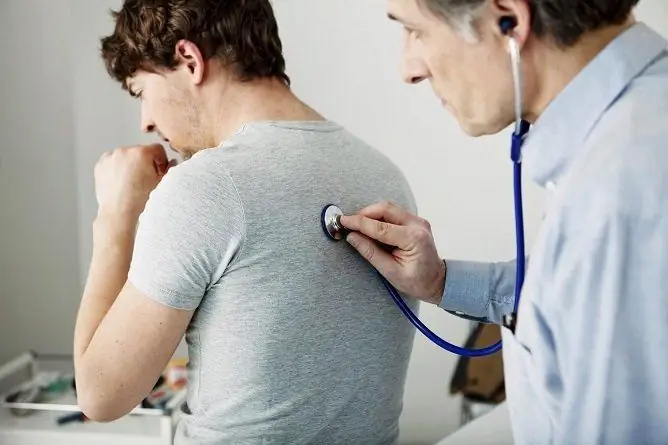- Author Rachel Wainwright [email protected].
- Public 2023-12-15 07:39.
- Last modified 2025-11-02 20:14.
Rehabilitation after pneumonia: recovery in adults and children
The content of the article:
-
How to recover from pneumonia for adults and children
- Breathing exercises
- Physiotherapy
- Inhalation
- Massage
- General principles of the recovery period
- Video
Rehabilitation after pneumonia is an important part of therapy. Complete recovery is not considered to stop the inflammatory process, but to restore the normal functioning of the lungs and bronchi.
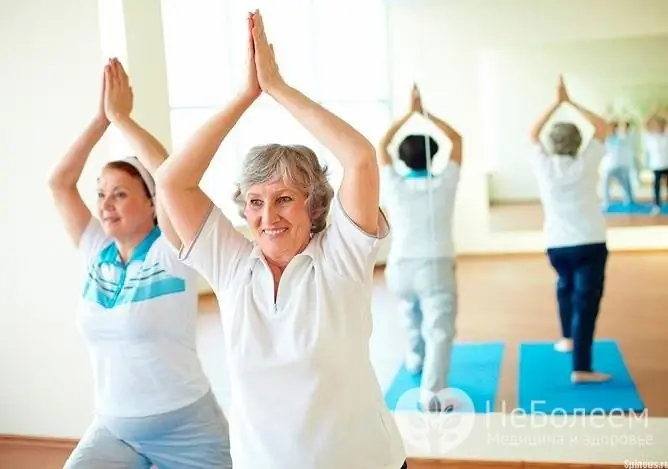
Rehabilitation treatment after pneumonia is necessary to restore lung function
Rehabilitation treatment usually includes breathing and therapeutic exercises, physiotherapy, massage, as well as a set of measures aimed at strengthening the immune system.
How long does it take for the body to recover from pneumonia? The answer to this question is required by people who have recently suffered from the disease.
Pathogenic microorganisms that have caused the development of inflammation, in the course of their vital activity, release toxins that affect the lung tissue and reduce the functions of the alveoli.
Alveoli take part in the act of breathing, carrying out gas exchange with the pulmonary capillaries. As a result of pneumonia, their function is impaired, and it takes much longer to recover than to treat the inflammatory process. In order for the rehabilitation to be successful, you need to follow all the doctor's recommendations.
How to recover from pneumonia for adults and children
Breathing exercises
Rehabilitation after pneumonia at home in adults and children is not complete without breathing exercises. These exercises can improve lung health. With pneumonia, they are filled with secretion, which leads to congestion. A course of physical exercises allows you to cope with the problem.
Respiratory gymnastics should be started after the body temperature returns to normal. They can be done at home:
- It is necessary to sit on a chair and breathe, alternating deep breaths with shallow ones. The procedure is carried out for a minute. Then they spread their arms to the sides and repeat the exercise. You need to finish it by walking in place, while breathing can be arbitrary.
- You need to walk slowly for two minutes, then stop, raise your arms above your head and slowly turn from side to side, taking deep breaths. It is necessary to carry out three passes of 10 breaths each.
- The exercise should be performed while standing. It begins with bending forward and spreading the arms to the sides. It is necessary to turn with your whole body and touch the foot of the opposite leg with your hand. In this case, breathing should be light and shallow. The exercise is done for two minutes.
- You need to start the exercise by raising your arms up in a sitting position on a chair. Then the hands are lowered down, while breathing is shallow. After that, you should begin to breathe deeply, clenching your fists tightly when inhaling and unclenching when exhaling.
Exercise should be repeated daily for two weeks. Exercise is good not only for the lungs, it also improves the functioning of the heart and blood vessels.
Also, several times a day, you need to do the following exercises daily:
- Hold your breath after inhaling for a few seconds. Gradually, the breath holding time is increased (by about 10 seconds).
- Take a deep breath, then hold your breath for a few seconds and exhale. Repeat 10 times.
Dead tissue of the lungs after pneumonia cannot be completely restored, but rehabilitation will improve the patient's condition. Breathing exercises help to increase lung capacity and do not require special skills.
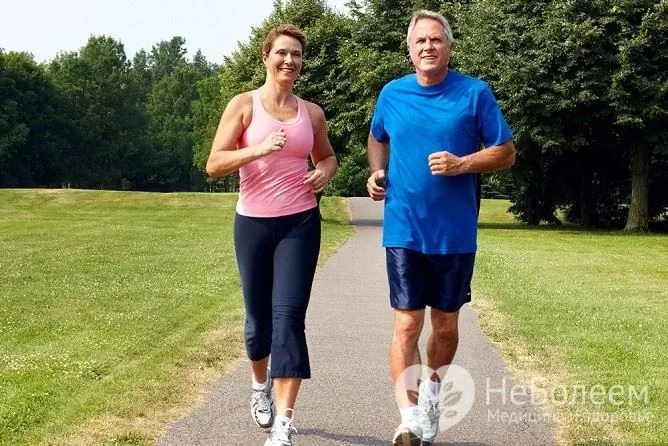
Jogging is indicated to increase lung volume
In order to get rid of shortness of breath after pneumonia and make your lung volume half more, you can do the following exercises:
- jogging (at least 30 minutes);
- inflating rubber balls;
- walking (at least 60 minutes).
It is not recommended to perform breathing exercises in the following cases:
- increased body temperature;
- shortness of breath, even if the person is at rest;
- bleeding;
- severe depletion of the body;
- the presence of cancer;
- mental illness.
Physiotherapy
Physiotherapy is an indispensable component of rehabilitation after pneumonia. It is aimed at improving sputum discharge, reducing the inflammatory process and speeding up the recovery of lung tissue.
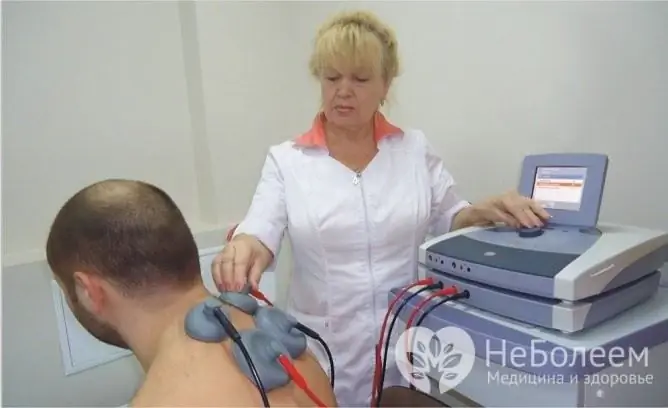
Physical therapy is an important part of recovery from illness
Electrophoresis is a treatment in which drugs are injected through the skin using electrical impulses. Also, electric current has a local irritating effect, allowing you to relax smooth muscle cells in the walls of blood vessels, improve blood circulation and accelerate the regeneration process.
During the rehabilitation period after pneumonia, electrophoresis with Lidaza is performed. This allows you to reduce the swelling and stop the development of the adhesions-cicatricial process that appears as a result of inflammation. The procedure is carried out daily for 10-12 days. Its average duration is 10 minutes, the maximum is 20 minutes.
Also effective for rehabilitation: ultra-high-frequency therapy for the chest area, light therapy, magnetic laser therapy, hydrotherapy.
Inhalation
Inhalation can reduce the inflammatory process, moisturize the mucous membrane, eliminate puffiness and cough, and also contribute to the discharge of sputum and improve immunity.

Inhalation helps to moisturize mucous membranes and stop coughing
The procedure is carried out no earlier than two hours after a meal. You need to inhale the medicine deeply, then you should hold the air a little. Inhalation for an adult is carried out for 10 minutes, 2-3 minutes will be enough for a child.
For inhalation use the following means:
- alkaline water. For the procedure, use the Borjomi mineral water, which is heated and warm steam is inhaled. During the rehabilitation period, you can do inhalations using a nebulizer. You can also prepare a soda solution (one teaspoon of baking soda per glass of water). Inhale warm steam for 10 minutes;
- decoctions of medicinal herbs. For inhalations, use means based on chamomile, calendula, oregano or sage flowers. A teaspoon of dry raw materials is poured with water and boiled for several minutes over low heat. Inhalation is carried out after the broth has cooled to a comfortable temperature;
- essential oils. The following oils are well suited for the procedure: eucalyptus, tea tree, fir, cypress or mint. They can be added to the aroma lamp and the scent can be inhaled. They also carry out warm-wet inhalations, adding a few drops of oil to a glass of hot water and inhaling the vapor.
Massage
Rehabilitation after illness includes massage. The procedure removes phlegm from the lungs and restores normal breathing. It is necessary to massage the front of the chest, then the back and neck.
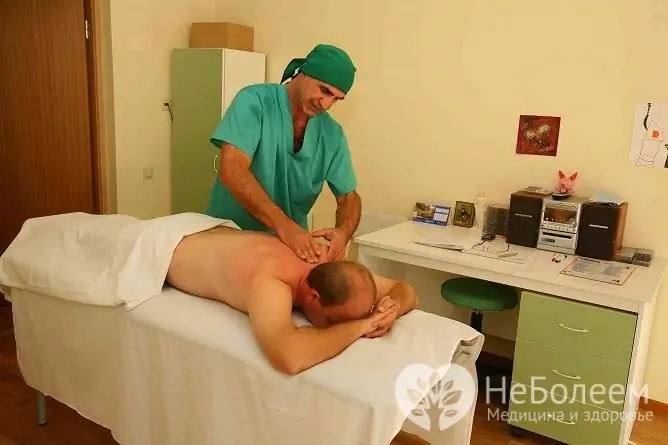
Massage helps speed up the recovery process
Before the end of the procedure, re-massage the front of the chest to remove excess fluid from the lungs.
The massage begins with stroking, then a rake-like rubbing is performed, which alternates with stroking. At the next stage, the pectoral muscles are kneaded, after which vibration is produced using shaking and percussion techniques. Finish the massage of the chest with stroking, then proceed to massage the back and neck using the same techniques.
The procedure should last 20-30 minutes. In order to carry out full rehabilitation, a course of 10-15 massages is required. If during the procedure the patient begins to feel bad, he has discomfort, the procedure should be abandoned. The massage can be resumed only after the condition has returned to normal.
General principles of the recovery period
Restriction of physical activity is required during rehabilitation after pneumonia. Outdoor walks are shown, however, they should not be tiresome.

To strengthen the immune system, you can drink rosehip tea
Attention should be paid to living conditions: the air in the room must be clean and humid, the room must be checked for drafts, which during this period are of particular danger.
If some of the symptoms of pneumonia are not completely controlled, such as coughing or weakness, treatment should be continued. Attention should be paid to strengthening the immune system. To do this, you can use decoctions of medicinal herbs and vitamin teas, for example, rosehip or sea buckthorn.
It is also important to organize proper nutrition. The patient needs to eat fatty foods that contain a sufficient amount of protein. But at the same time, in order to avoid problems with the gastrointestinal tract, you need to give up fried, spicy and salty foods.
Recovery from pneumonia in adults and children should last at least a month. Inflammation of the lungs is a very serious disease, and if full rehabilitation is not carried out, complications or a relapse of the disease may develop. One of the most important conditions for successful rehabilitation is the fulfillment of all the recommendations of the attending physician.
Video
We offer for viewing a video on the topic of the article.

Anna Kozlova Medical journalist About the author
Education: Rostov State Medical University, specialty "General Medicine".
Found a mistake in the text? Select it and press Ctrl + Enter.



